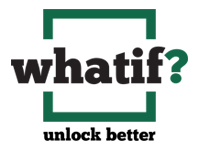
Transition, transformation, and transcendence: what are you leading?
The risks associated with trying to hold firm in today’s environment is akin to rearranging the deck chairs on the Titanic.
In this ever changing and challenging operating environment, leaders must deal with complex and complicated issues while addressing multiple crises. The past three years made this abundantly clear.
If there is one thing boards, CEOs, and leaders all agree on, it’s status quo is not a viable option. Managing in a steady state of volatility is daunting for sure. That said, the risks associated with trying to hold firm in today’s environment is akin to rearranging the deck chairs on the Titanic. Stakeholder capitalism with its focus on creating value for customers, people, and communities in addition to shareholders, makes it a multi-dimensional challenge requiring thoughtful decisions to reduce the risk of addressing one aspect at the expense of others. Shareholders, customers, employees, and communities are looking for answers. What’s a leader to do?
For example, during the pandemic, consumption shifted from services to goods. Air travel fell off the table and Peleton sales skyrocketed. It made sense; we couldn’t go anywhere. In response, organizations had to assess and address their e-commerce, supply chain, and customer serving capabilities. Digitalization programs were enthusiastically launched with innovative technologies adopted to meet shifts in customer demand while adopting to a virtual workforce model. Transformation became the word of the day, being used liberally as the label put on virtually every change undertaken. As we start 2023, the shift is 180 degrees back to services. Air travel is now higher than pre-pandemic levels and Peleton is in trouble. New transformation efforts to adapt to a post-pandemic world abound. But is everything primarily a transformation?
In conversations with executives, we talk about situational complexity, working through issues, and how to embrace change to deliver expected value. We also discuss being clear on what they are leading, how to build psychological safety to foster team engagement, and creating a more meaningful experience for all involved. It starts with having a deep understanding of where the business is and where it must go.
Consider “A to Z Services Company” (pseudonym). Having grown largely through acquisitions, they found themselves the owners of a basket of several B2B services: many complementary, some duplicative. Leadership saw an opportunity to bundle the services into cohesive solutions to better meet customer needs, reduce market confusion, and accelerate growth. They embarked on a transformation from a service-centric to a solution-centric business. Early in journey they were challenged with duplicative systems, processes, and a hodgepodge of technology. They decided to adopt modern technologies to further transform the operating model to reduce friction and drive speed to value. So far, so good? Almost.
Strategy execution was challenged by false starts, higher than budgeted costs, and missed deadlines which frustrated customers, employees, and planned revenue targets. Sand was in the gears. It came down to a couple of key issues. First, by running in a constant state of change with ongoing rhetoric on the urgent need to transform the business, fatigue set in. In addition, there was ambiguity on the purpose or need. It had been communicated as an existential business threat creating a culture of unease and a crisis of confidence. Key employees and clients voted with their feet.
The leadership team decided to step back and rethink what they were doing and why. They challenged themselves to do more than provide better services and solutions than their competitors by challenging each other with six tough questions.
- What if we created a meaningful experience for clients and more meaningful work for our people?
- What would that look like?
- What tangible impact could we have?
- What would have to be true?
- How might we go about doing it?
- How will we know we are succeeding?
They came to understand the real opportunity was to transcend, to reimagine the business. They then engaged directly with customers and more extensively with their people to create a compelling story of a better future and how stakeholders would benefit. With this collective view, three-way collaboration led to clarity on the transformation needed to support a transition from a service-centric to a customer-centric business.
A new year is an opportunity to think about the changes we as leaders want to make. What if we think of these changes as an opportunity to first transcend, then transition, followed by the transformation needed to bring it to life? What if we applied this thinking to ourselves and teams in addition to our organizations? Might we gain more meaning through this clarity? At minimum, I suspect we would see votes by customers, talent, and investors to stay put.
As always, let me know your thoughts.


Leave a Reply